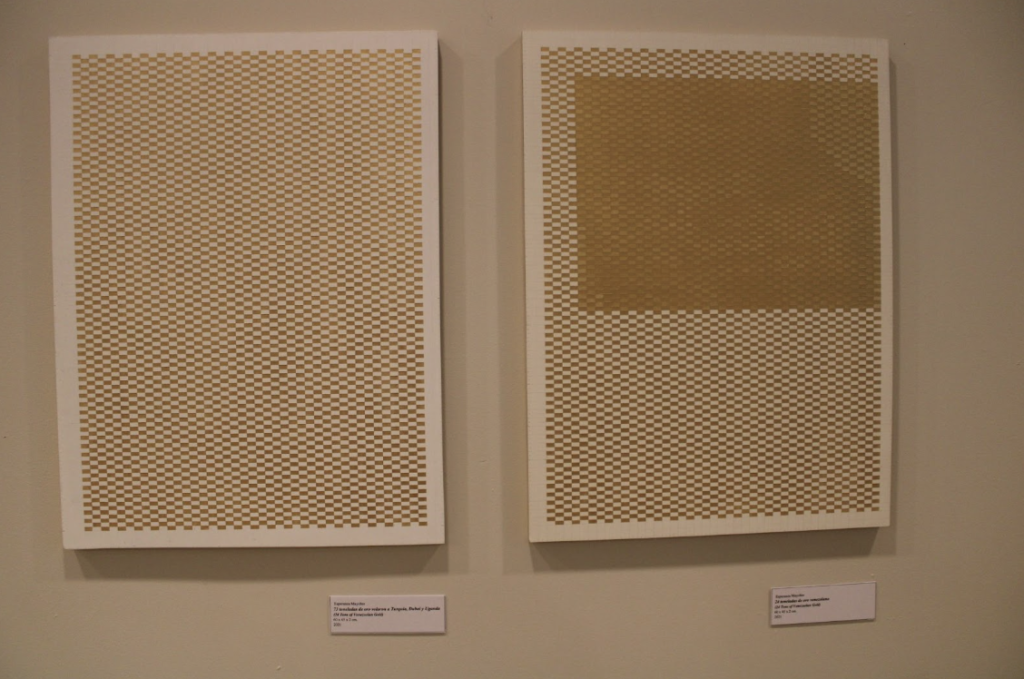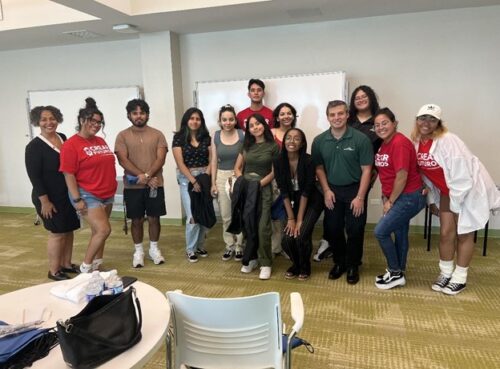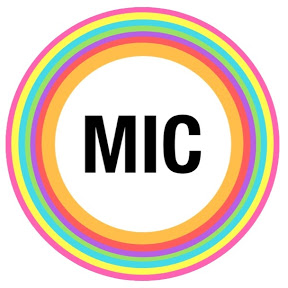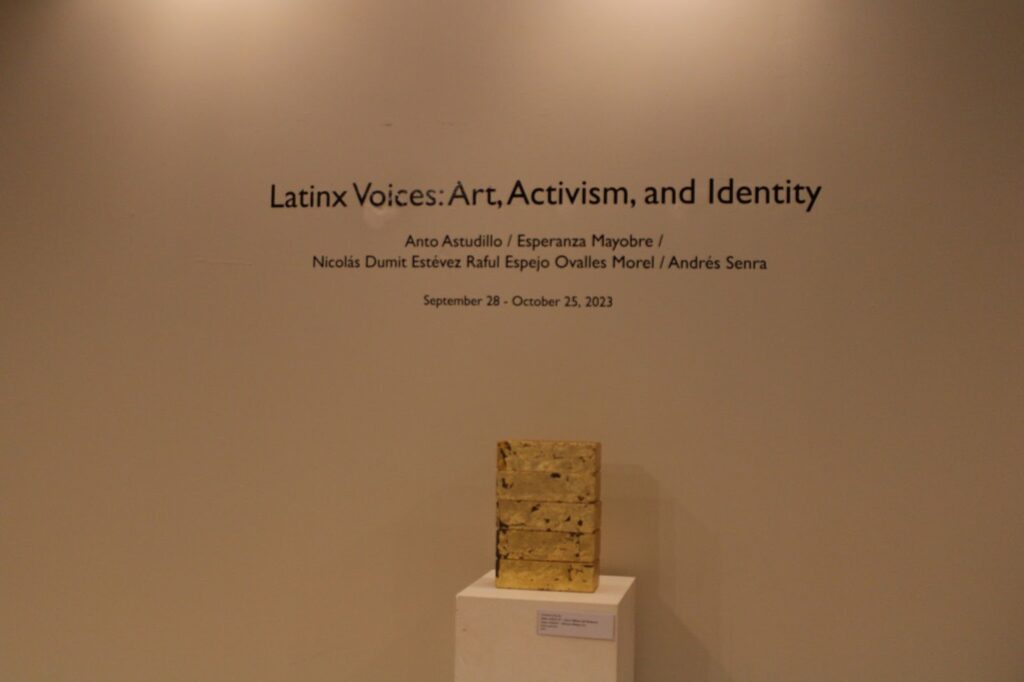
Until October 25, the SUNY Old Westbury ART LAB is hosting a new exhibit: Latinx Voices: Art, Activism and Identity. The exhibition features the work of Anto Astudillo, Esperanza Mayobre, Andres Senra, and Nicolas Dumit Estevez Raful Espejo Ovalles Morel. The ART LAB resides in Woodlands Hall 1.
The event opened on September 28 with a roundtable talk of all the artists briefly discussing their works, but every single one of them, all immigrants who emigrated from different countries, all said the same thing; they felt as if they were invisible in the arts. These artists are a group of people whose art does not get recognized simply because of where they are from, and that does not allow their experiences to get out. Some of the artists had some sense of longing for their birthplace. Others had more of a longing for change or just exposure.
There was discussion about the word Latinx and what it means. Not all of the four artists identified as Latinx, but the word was still being used to include all the artists there. The exhibit, in a manner, is about the artist’s invisibility. In certain ways, using the word Latinx helps to make them become visible.
The ART LAB was “founded in the context of SUNY OW SEJI (Social & Environmental Justice Institute)” which, as the name suggests, carries on the university’s social justice mission statement. The Director of the Art Lab and Amelie A. Wallace Gallery, Dr. Hyewon Yi, said she “thinks the students appreciate it.” It also makes it more accessible to everyone. She has a “great experience and got to know interesting people there.” It brings activity and life to the dorm and also gives other opportunities for other centers on campus to exhibit things, like this exhibit which was in collaboration with the P.A.C. (Panther Arts Collective), El Conuco, the Wallace gallery, and SEJI. (Supplemental information for this article is, as always, sourced from the pamphlets at the exhibit.)
When you walk into the ART LAB, it is a triple and double dorm room that has been converted into a gallery showroom. The triple room has TVs and a projector featuring videos by Astudillo and Nicolas. Mayobre and Serna’s art are displayed in the double room.
Anto Astudillo is a filmmaker that has been capturing different political movements for over 10 years. In the ART LAB, they have two short films, one called The People’s Revolt (Part1) and another called Golpes. Both films capture different times. The People’s Revolt (Part1), filmed in 2019, depicts the student’s protests in Chile, while Golpes is a film about the Chilean coup d’état of September 11th, 1973.
The People’s Revolt (Part1) is scary, but also comforting. It was recorded on 16mm film to obscure the vision of it and show the viewers the blurriness of the tear gas being thrown around. Astudillo was archiving Chilean history.
They start the film with an explanation of the unfair wealth gap. Astudillo takes the viewer in with them as a participant of the protests, as if the viewer was right there, in the middle of all the chaos. When the screen becomes black, it is to be assumed that it is night, but in connection to the tear gas in their eyes making it hard to see. There were loud sirens and people screaming. There were moments when Astudillo would focus on the people waving Chile’s flag. Other shots were of people wearing goggles and masks to defend themselves from the teargas.
Though everything described sounds terrifying, the comforting part of it was that all of the people were fighting for the same thing. All of the people were coming together, playing music, and standing together in the fight against the government all for the same reasons.
Astudillo was asked about the following line from The People’s Revolt (Part1), and what they meant by saying, “For the first time, I could trust everyone.” They responded with, “the reason we [the people] do not trust each other is because of the government and how they make you feel about each other. When the revolt happened, we met each other protesting for the same cause.” Astudillo is showing the protests in Chile from a new perspective, a true one which is from the people’s own eyes.
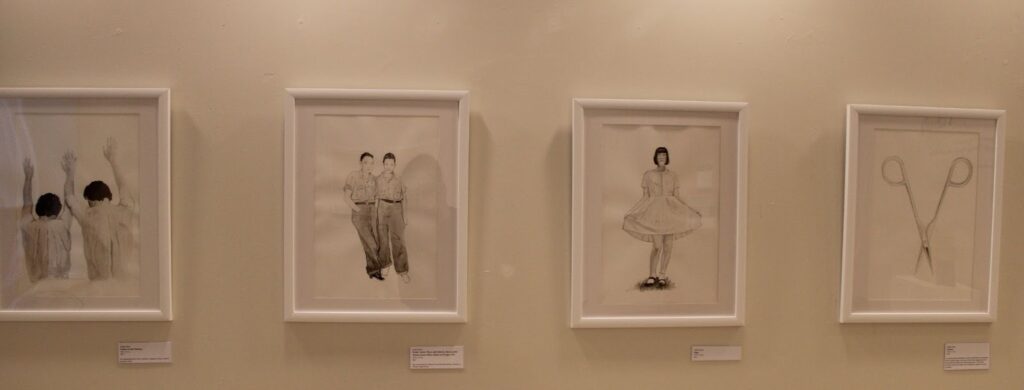
Andrés Senra has four ink-drawings, one photograph, and a short film. All of them give a voice to queer people that are not able to be seen or are able to tell their stories. The four drawings put queerness into the limelight.
One drawing of scissors and which is also named, Scissors, is perfectly drawn surgical scissors, and it represents how intersex people cannot determine their own sex later in life. He is showing something that is not spoken of and also putting an awareness for people who do not know about intersex people. For the people who have experienced that situation, it gives them some representation in their identity.
Another drawing titled, Drag, is what appears to be a man dressed in a dress. The thing that makes this so special is that it is not what people typically think of when they see drag. Drag is associated with a man dressed elegantly as a woman, but in this drawing, the person is wearing a dress that an older woman or child would wear. It pushes against the conventional images of drag, yet this is still drag.
Another drawing named Evelyn “Jackie” Bross and Catherine Barscz at the Racine Avenue Police Station in Chicago in 1943, contains two women dressed as men. It is a drawing Senra did from the Museum of Chicago’s archive. In the past, there were actual laws that prohibited cross dressing, and individuals that did not comply with it were arrested. This is a topic that is still relevant more than fifty years later. The ink drawings in black and white bring all the images to life, making them almost tangible, like the scissors.
While Senra was talking about his film, Postrauma, with the other artists, he was questioned about his performance art projects and if he found it harder or easier to do his works in Spain. He said some of his works could have not been done in New York, due to certain laws and norms that Spain does not have. Although some things are easier to get away with overseas, in New York, there is more support for political art than there is in Spain.
Nicolas Dumit Estevez Raful Espejo Ovalles Morel is an artist born and raised in Quisqueya in the Dominican Republic. He is a proud citizen of the Bronx, having been baptized in 2011 as a ‘Bronxite.’ Nicolas has had his art featured in multiple prestigious museums, such as MoMA (Museum of Modern Art). During the roundtable, he spoke virtually over Zoom and was being broadcast from Texas.
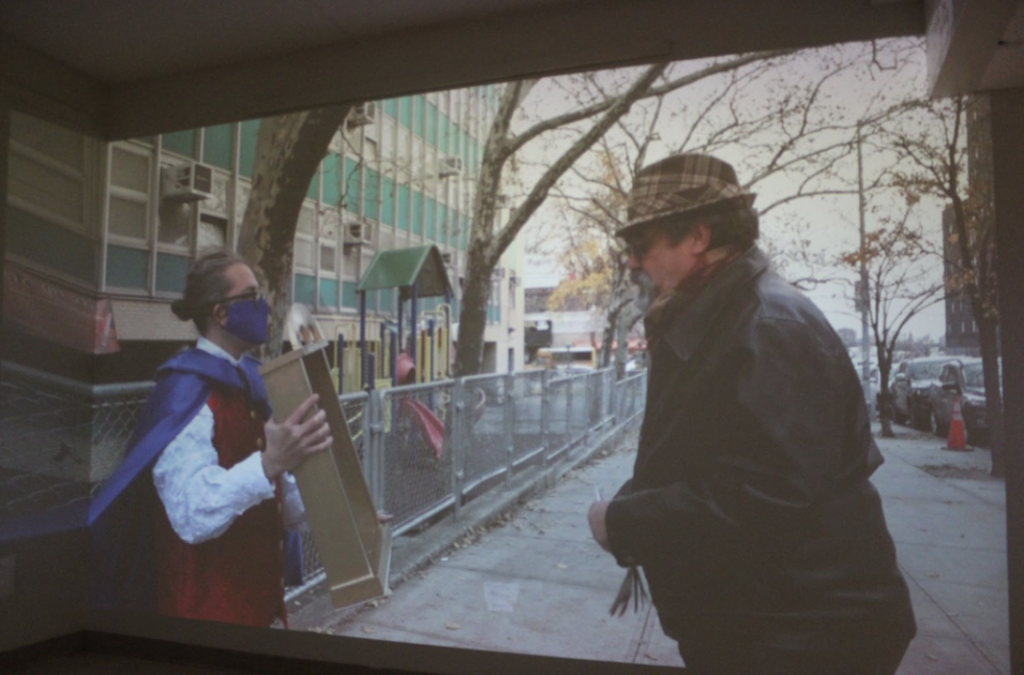
Nicolas’ piece was a short film titled Visioning the Brown Mother (2022). The film consisted of Nicolas, dressed in a red, white, and blue outfit, walking a pilgrimage from the South Bronx to Washington Heights. Nicolas carries on his head a wooden frame containing an image of La Virgen de La Altagracia, the guardian saint of the Dominican Republic, and on its flipside, a mirror. The film is essentially about the migration of Dominicans from the Heights to the Bronx, after the former’s gentrification.
Although the film mostly consists of shots of Nicolas walking the littered streets of the city, it’s given a sentimental core as he asks passersby what they see in the image of La Altagracia and the mirror.
This deceptively simple premise paves the way for some emotional testimonies from Average Joe New Yorkers. “Right now, I see myself with these cables in my nose,” said a larger man who had oxygen tubes laced around his face. One could see in his face an unsatisfied anguish with himself. When questioned what they asked La Altagracia, another person, who looked sick and down on their luck, said somberly, “May I be better?”
Esperanza Mayobre is another artist whose works were shown. Born in Caracas, Venezuela and currently based in Brooklyn, Mayobre’s works are rooted in the country that raised her. She has lived in New York since 2004, and her work is featured in multiple museums, such as the Queens Museum and the Contemporary Museum of El Salvador. At the roundtable discussion, Mayobre talked about her nostalgic photography, which tends to depict the Venezuelan beaches of her childhood.
“All of my [work] is about longing [for] this landscape,” Mayobre explained. Her photography utilizes layers of blue, perfectly relaying the ennui of far-off waters on the horizon line, a sight that should be familiar to anyone who has visited Long Island. “I’m more fun than this, this is kind of somber,” she jokes, “But life is like this.”
The works she has on display at the ART LAB, however, are not photographs. 24 toneladas de oro venezolano (2021) and 73 toneladas de oro volaron a Turquia, Dubai y Uganda (2021) are two drawings inspired by the Venezuelan exporting of massive quantities of gold to places like Uganda and the United Arab Emirates. The drawings show a checkered pattern of gold and blank white, and, like Mayobre’s photography, are pointedly minimalist. It’s an effective way to show the sheer quantity of gold that has been ripped from Venezuela.
These artists and their works show the often unseen side of the Western hemisphere. By telling their stories and focusing on issues that are important to them, these artists are shining a light on the real Latinx community.
